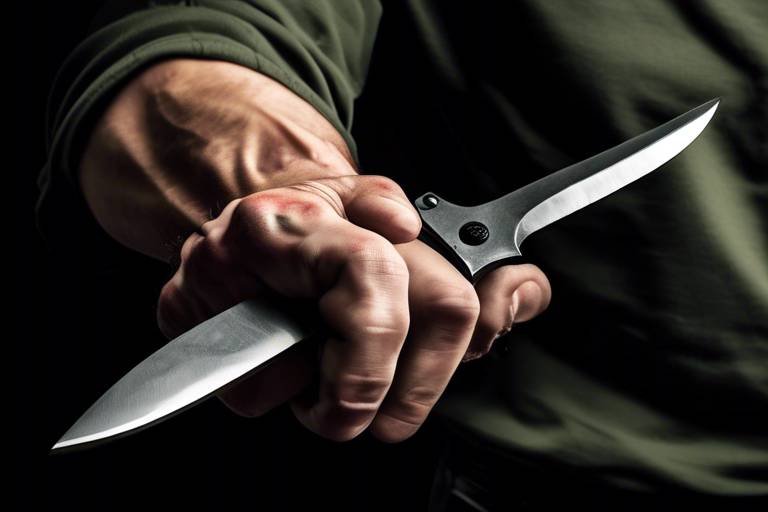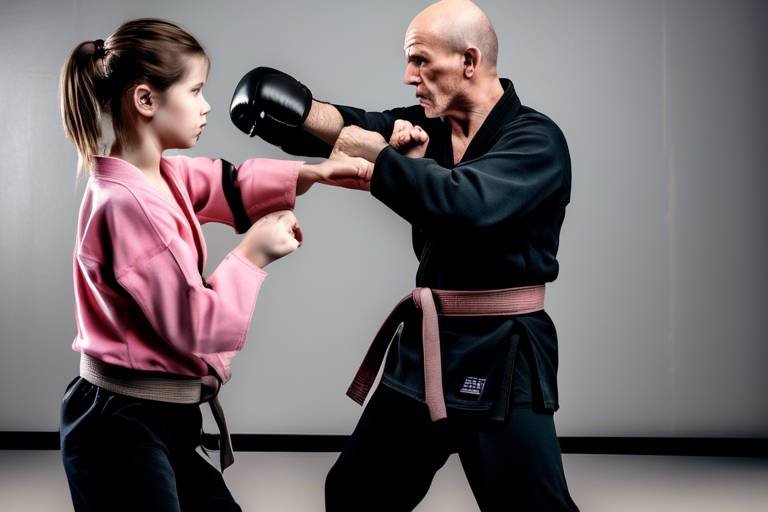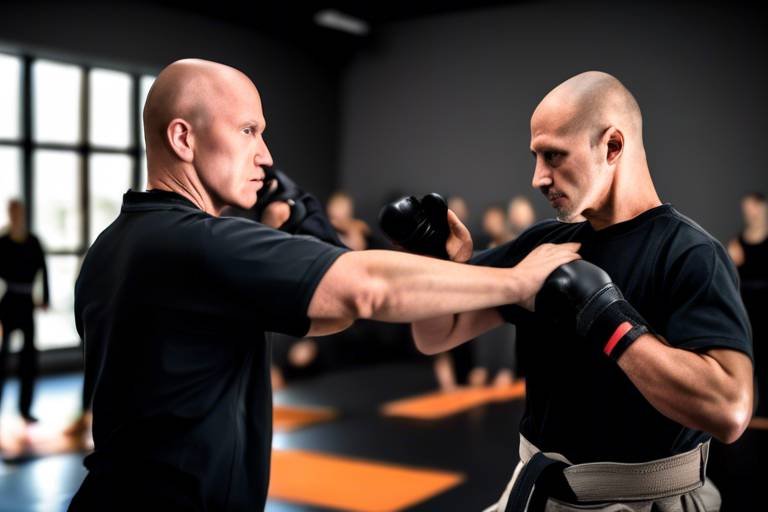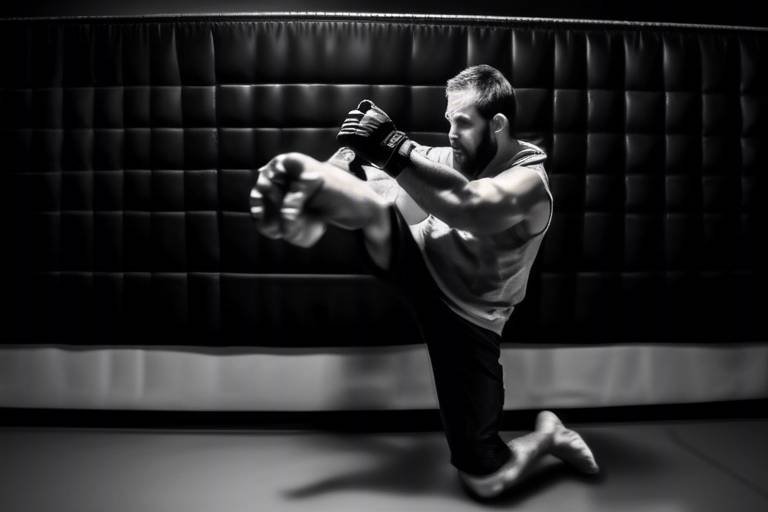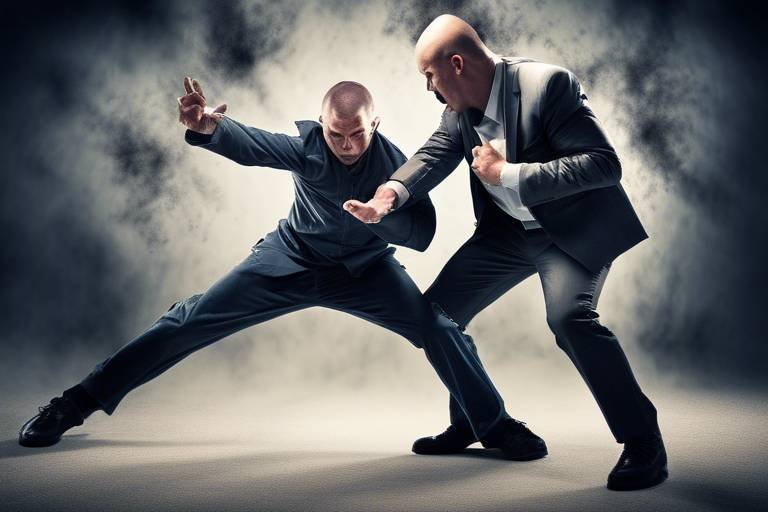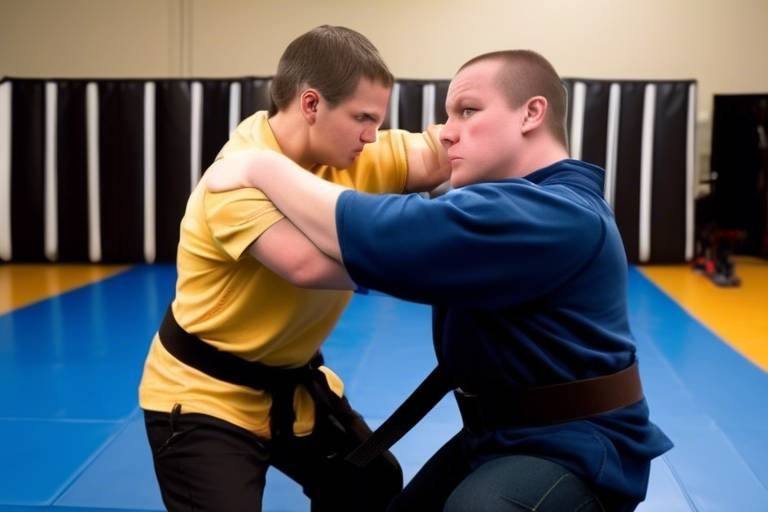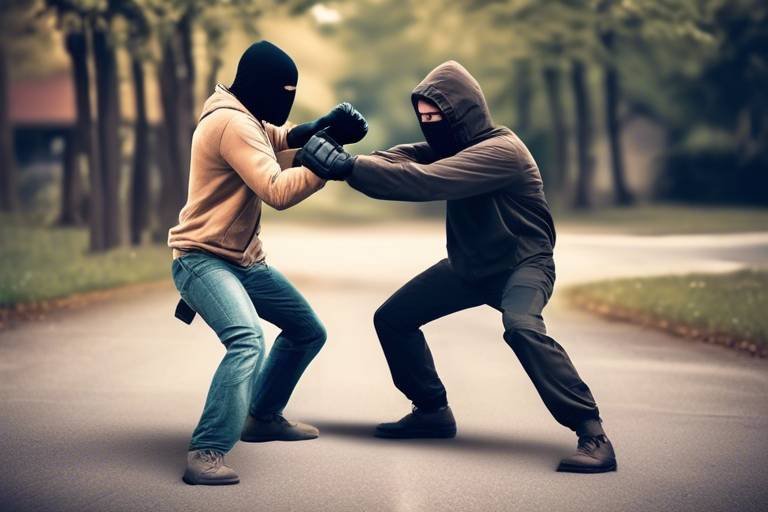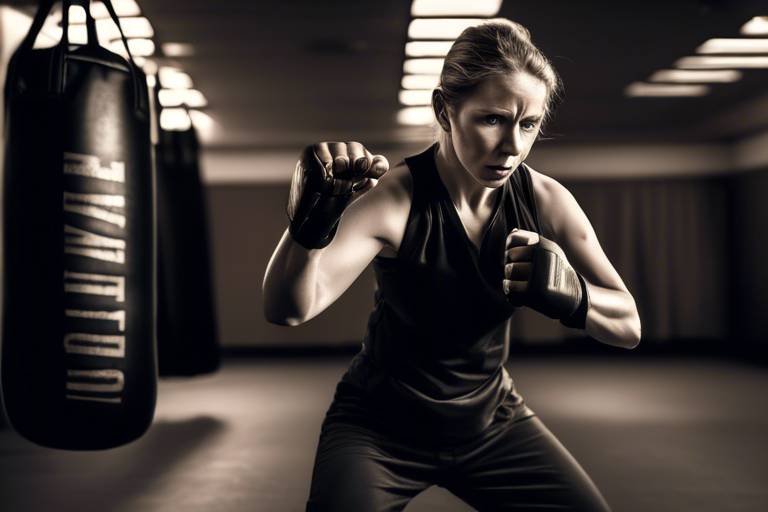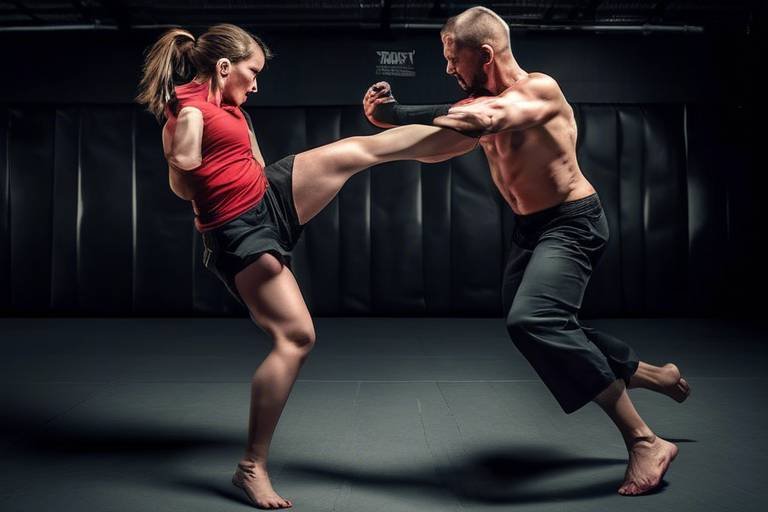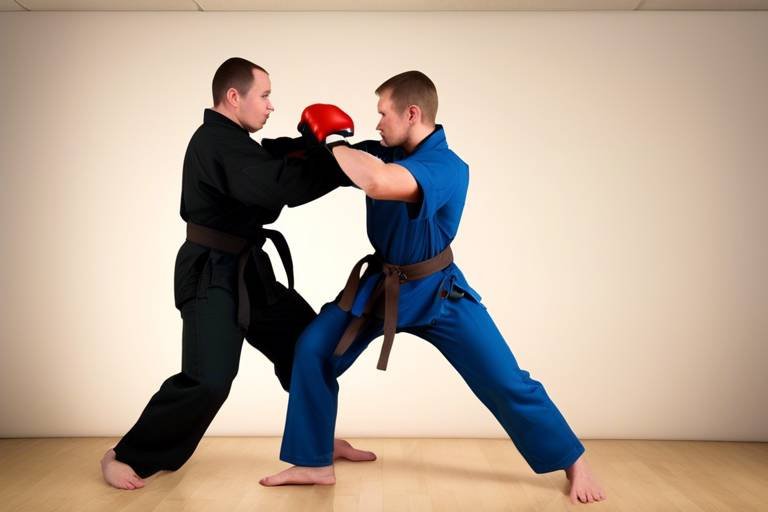What to Expect from Your First Self-Defense Training Session?
Stepping into your first self-defense training session can feel like a thrilling adventure mixed with a dash of anxiety. It's completely normal to have butterflies in your stomach as you prepare to learn how to protect yourself. But fear not! This article will guide you through the essential aspects of what to expect, ensuring you walk in with confidence and a sense of excitement. From the moment you step through the door, you'll find yourself in a world designed to empower you, both mentally and physically.
First off, let's talk about the atmosphere. Imagine walking into a space buzzing with energy—the sound of feet hitting the mat, instructors calling out techniques, and fellow trainees sharing tips and encouragement. It's a supportive environment where everyone is there for the same reason: to learn how to defend themselves. You might be surprised by how welcoming and friendly everyone is, regardless of their skill level. This camaraderie can be incredibly motivating, making you feel like part of a community right from the start.
Now, you might be wondering what exactly you'll be doing during your first session. Expect a mix of warm-ups, technique demonstrations, and practice drills. The instructor will likely begin by introducing themselves and explaining the goals of the class. You'll learn that self-defense isn't just about physical techniques; it's also about mental awareness and confidence. Think of it as equipping yourself with a mental toolkit that prepares you for unexpected situations.
As you dive into the training, you'll quickly discover that self-defense is not just about brawn; it's about using your brain too. You’ll learn how to assess a situation, recognize potential threats, and make quick decisions. This mental aspect is just as crucial as the physical techniques you'll practice. In fact, many self-defense experts argue that awareness and avoidance are your first lines of defense. By the end of your session, you’ll leave not only with new skills but also with a greater sense of self-assurance.
So, what should you bring to your first training session? Here's a quick checklist to help you prepare:
- Comfortable workout clothes
- Water bottle to stay hydrated
- A towel for wiping off sweat
- A positive attitude and an open mind
In summary, your first self-defense training session will be an eye-opening experience filled with valuable lessons and new friendships. Embrace the journey, and remember that every expert was once a beginner. By the end of the session, you’ll not only have learned some basic techniques but will also have taken a significant step towards enhancing your personal safety and confidence.
Here are some common questions you might have before your first self-defense training session:
- Do I need any prior experience? No, self-defense classes are designed for all skill levels, including beginners.
- What if I'm not in great shape? Self-defense training is about personal growth, and everyone progresses at their own pace.
- Are the classes safe? Yes, safety is a priority. Instructors will ensure that all techniques are practiced in a controlled manner.
- What should I wear? Comfortable athletic wear that allows for movement is recommended.

Preparation for Your First Session
Understanding what to bring and how to prepare mentally and physically can significantly enhance your experience during your first self-defense training session, ensuring you feel ready and confident. First things first, let’s talk about what to wear. Comfort is key! You’ll want to wear workout clothes that allow for a full range of motion. Think about breathable fabrics that won’t restrict your movements. A good pair of athletic shoes is also essential, as they provide the grip and support you’ll need during training. Avoid wearing jewelry that could get caught or cause injury, and if you have long hair, tie it back to keep it out of your face.
Next, let’s discuss what to bring. Most self-defense classes will provide the necessary equipment, but it’s always good to check ahead. A water bottle is crucial to stay hydrated, especially if you’re sweating it out during the session. You might also want to bring a towel, as things can get pretty intense! If you have any personal protective gear, like a mouthguard or shin guards, feel free to bring those along too. However, don’t stress if you don’t own any; most instructors will have gear available for beginners.
Now, let’s not forget about the mental preparation. It’s entirely normal to feel a bit anxious before your first class. Think of it like stepping onto a roller coaster for the first time—exhilarating and a little scary! Embrace the excitement and remind yourself that you’re taking a step towards empowerment and safety. Visualize yourself successfully learning and applying the techniques you’ll be taught. This mental rehearsal can help ease nerves and boost your confidence.
Lastly, consider arriving a bit early. This gives you time to familiarize yourself with the training space and meet your instructor and fellow classmates. A warm welcome can make a world of difference in easing any pre-class jitters. Plus, getting there early allows you to ask questions and clarify any doubts you may have. Remember, everyone in the class is there to learn, just like you!
In summary, your first self-defense training session is all about preparation. By dressing appropriately, bringing the right gear, mentally preparing yourself, and arriving early, you set yourself up for a successful and enjoyable experience. So, get ready to step out of your comfort zone and into a world of newfound confidence!

The Training Environment
Stepping into your first self-defense training session can feel like entering a new world. The training environment plays a crucial role in shaping your experience, so it's essential to know what to expect. Imagine walking into a space designed to empower you, where every corner is filled with potential for growth and learning. From the moment you arrive, the atmosphere should be inviting and supportive, helping to ease any nervousness you might feel.
When you walk into the training area, you'll likely notice a variety of equipment that will aid in your learning. Mats for practicing falls and rolls, heavy bags for striking techniques, and protective gear are just a few examples of what you might encounter. Each piece of equipment serves a purpose, contributing to a comprehensive training experience. The layout of the space is also important; it should be open enough to allow for movement while ensuring safety. You might find designated areas for different activities, such as striking practice, grappling, or even warm-up exercises.
Self-defense training can occur in various settings, and each type of space offers unique advantages. Whether you're in a gym or an outdoor area, the environment can significantly impact your comfort level and learning experience.
Indoor training facilities often provide a controlled environment that is perfect for focused practice. Think of it as a sanctuary where you can hone your skills without distractions. The temperature is regulated, and you won’t have to worry about unexpected weather changes. This allows you to concentrate fully on mastering techniques and strategies. Additionally, indoor facilities typically have mirrors, which can be incredibly helpful for self-assessment and improving your form.
On the other hand, training outdoors can be an exhilarating experience. Imagine feeling the fresh air on your face while practicing techniques in a real-world environment. Outdoor settings introduce elements like uneven terrain and varying weather conditions, which can enhance your understanding of how to apply self-defense techniques in unpredictable situations. This kind of training prepares you for scenarios you might encounter in everyday life, making your practice even more valuable.
Regardless of the environment, one thing remains constant: the goal is to create a safe space where you can learn and grow. Your instructor will likely encourage you to ask questions and express any concerns you may have. This open communication fosters a sense of community among participants, making it easier to bond with others who share similar goals. So, as you prepare for your first session, remember that the training environment is designed to support you on your journey towards becoming more confident and capable in self-defense.
Q: What should I wear to my first self-defense class?
A: Wear comfortable clothing that allows for freedom of movement. Athletic wear is usually best, and don't forget supportive footwear!
Q: Do I need any prior experience to join a self-defense class?
A: No prior experience is necessary! Classes are often designed for beginners, so you'll learn at your own pace.
Q: How long do self-defense classes typically last?
A: Most sessions last between 60 to 90 minutes, allowing ample time for warm-up, instruction, and practice.
Q: Is it safe to train with partners?
A: Yes, training with partners is a key aspect of learning self-defense. Instructors prioritize safety and often provide guidelines to ensure everyone feels comfortable.

Types of Training Spaces
When it comes to self-defense training, the environment plays a crucial role in shaping your learning experience. Think of it as the stage where you will rehearse your skills; each type of training space offers its own unique set of advantages and challenges. The two primary settings for self-defense training are indoor facilities and outdoor areas, and understanding the differences between them can help you choose the right environment for your personal growth.
Indoor facilities are often the go-to choice for many self-defense classes. These spaces are typically equipped with mats, mirrors, and various training tools that create a controlled environment. Imagine stepping into a dojo where the atmosphere is calm, and the focus is solely on honing your skills. In such settings, you can practice techniques without worrying about external distractions like weather or uneven ground. This controlled setting allows for a more concentrated learning experience, making it easier to absorb new techniques and strategies.
On the other hand, outdoor training offers a refreshing twist. Picture yourself in a park or an open field, where the sun shines down and the breeze flows through your hair. Training outside introduces real-world elements that can significantly enhance your self-defense skills. You might encounter uneven terrain, varying weather conditions, and even distractions like sounds from the environment. These factors can mimic real-life scenarios, preparing you for situations where you may need to defend yourself in less-than-ideal circumstances. It's like taking your training from the classroom to the streets, where the stakes are higher, and the lessons are more impactful.
Below is a quick comparison of the two types of training spaces:
| Aspect | Indoor Facilities | Outdoor Settings |
|---|---|---|
| Environment Control | Highly Controlled | Less Controlled, More Varied |
| Distractions | Minimal | Potentially High |
| Real-World Application | Focused on Technique | Enhanced Realism |
| Equipment Availability | More Equipment | Limited Equipment |
Ultimately, the choice between indoor and outdoor training spaces depends on your personal preferences and goals. Some people thrive in the structured environment of a gym, while others feel invigorated by the unpredictability of outdoor training. Regardless of the setting, the key is to engage fully in the experience, absorb the lessons, and practice regularly. After all, self-defense training is not just about learning how to throw a punch or escape a hold; it’s about building confidence and preparing yourself for whatever life throws your way.

Indoor Facilities
When stepping into an indoor self-defense training facility, you'll find yourself enveloped in an environment designed specifically for learning and growth. These spaces are often equipped with various amenities that cater to both beginners and advanced practitioners alike. Imagine walking into a well-lit room, the air buzzing with energy and anticipation, where the only thing on your mind is mastering the art of self-defense. Indoor facilities provide a controlled environment that allows you to focus entirely on your training without the distractions of the outside world, such as weather conditions or unexpected interruptions.
One of the key advantages of training indoors is the availability of specialized equipment that can enhance your learning experience. For instance, you might encounter training mats for practicing falls and rolls, punching bags to develop striking techniques, and even protective gear to ensure safety during sparring sessions. The layout of these facilities is typically designed to maximize space and functionality, allowing for various training activities to occur simultaneously.
Moreover, indoor facilities often foster a sense of community among participants. As you train alongside others, you’ll likely find camaraderie and support, which can be incredibly motivating. The atmosphere in these spaces is usually positive and encouraging, making it easier to push through challenges and celebrate small victories. You might even find yourself sharing tips and techniques with fellow trainees, creating an enriching learning experience that goes beyond the instructor's guidance.
Another crucial aspect of indoor training is the consistency it offers. Unlike outdoor settings where conditions can change rapidly—think rain, wind, or extreme temperatures—indoor facilities maintain a stable environment. This stability allows you to focus on refining your skills without worrying about external factors. Whether it's a hot summer day or a chilly winter evening, you can count on your training session being uninterrupted and productive.
In summary, indoor facilities are tailored to provide a safe, supportive, and distraction-free environment for your self-defense training. They not only enhance your learning experience but also help build confidence as you navigate through various techniques and strategies. So, as you prepare for your first session, rest assured that you are stepping into a space that is committed to helping you succeed on your journey toward personal safety and empowerment.

Outdoor Settings
Training in can be an exhilarating experience, combining the benefits of fresh air with the unpredictable nature of real-life scenarios. Imagine stepping outside, feeling the breeze on your face, and knowing that each training session is not just about learning techniques, but also about adapting to your surroundings. Outdoor environments introduce unique challenges that indoor facilities simply cannot replicate. For instance, the uneven ground can affect your balance and movement, while natural obstacles like trees and benches can serve as practical props for learning how to navigate and escape in real-world situations.
One of the most significant advantages of outdoor training is the element of realism. When you practice self-defense techniques in a natural setting, you’re not just memorizing moves; you’re learning to apply them in contexts that mimic potential threats. This can be invaluable for building muscle memory and confidence. In addition, outdoor training often encourages a sense of camaraderie among participants, as everyone is sharing the same experience of adapting to the environment. The laughter and shared challenges can make the training feel less daunting and more enjoyable.
However, there are a few things to keep in mind when participating in outdoor self-defense classes:
- Weather Conditions: Be prepared for changes in weather. Rain, wind, or even extreme heat can affect your training experience.
- Proper Footwear: Choose footwear that provides good grip and support. This is crucial for maintaining stability on uneven terrain.
- Awareness of Surroundings: Outdoor settings can be distracting, so it's important to stay focused and aware of potential hazards.
In summary, outdoor self-defense training offers a dynamic and engaging way to learn essential skills. It prepares you not just physically, but mentally, for the unpredictability of real-life situations. So, whether you're practicing a defensive maneuver or striking technique, remember to embrace the environment and use it to your advantage. Each session outdoors is an opportunity to challenge yourself and grow in confidence, making you more prepared for whatever life throws your way.

Instructor Expectations
When you step into your first self-defense training session, one of the most important aspects to consider is your instructor. Think of them as your guide through this empowering journey. You might be wondering, "What can I expect from them?" Well, let's break it down. First and foremost, your instructor should have a solid background in self-defense techniques and ideally, some experience in teaching. This isn't just about knowing how to throw a punch; it's about understanding how to convey that knowledge effectively to students of all levels.
Communication is key in any learning environment. A good instructor will not only demonstrate techniques but will also articulate them clearly, ensuring that you understand the why and how behind each move. They might use analogies to explain concepts, making them relatable and easier to grasp. For instance, they could compare a defensive maneuver to a dance step, emphasizing timing and rhythm. This approach helps demystify the techniques and makes learning feel less intimidating.
Moreover, expect your instructor to create a supportive atmosphere. Self-defense isn't just about physical strength; it's also about building confidence. A great instructor will encourage questions, foster a sense of community among students, and celebrate small victories, like mastering a basic move. They understand that everyone learns at their own pace and will adapt their teaching style to accommodate various learning preferences.
In addition, your instructor should prioritize safety above all else. This includes not only ensuring that the techniques are practiced safely but also creating an environment where students feel comfortable expressing their concerns or fears. They might set clear guidelines for sparring or partner work, helping to alleviate any anxiety about getting injured or overwhelmed. After all, the goal of self-defense training is to empower you, not to intimidate you.
Lastly, don’t hesitate to observe your instructor's demeanor. A passionate instructor who loves what they do can be incredibly motivating. Their enthusiasm can ignite your own passion for learning self-defense. So, as you prepare for your first session, remember that your instructor is there to help you grow, both in skill and confidence. Embrace the experience, and don't be afraid to engage with them. After all, this journey is as much about personal growth as it is about learning to defend yourself.
- What should I wear to my first self-defense class? It's best to wear comfortable clothing that allows for movement. Athletic wear is ideal.
- Do I need to have any prior experience? No, most classes are designed for beginners, so you don't need any experience to start.
- Will I get hurt during training? While self-defense training involves physical activity, instructors prioritize safety and will guide you on how to practice safely.
- How long are typical self-defense classes? Classes usually last between 60 to 90 minutes, depending on the facility and program.

Basic Techniques You Will Learn
Stepping into your first self-defense training session is like opening a door to a new world of empowerment and confidence. You might be wondering, “What exactly will I learn?” Well, let’s dive into the fundamental techniques that will be your building blocks as you embark on this exciting journey. The beauty of self-defense lies in its practicality; the skills you acquire can be applied in real-life situations, making you feel more secure and self-assured.
One of the first things you’ll likely encounter are striking techniques. These are essential for creating distance between you and a potential attacker. Imagine this: you’re in a situation where someone is coming toward you aggressively. Knowing how to deliver a proper punch or kick can be a game-changer. You’ll learn about the mechanics of your body, how to generate power, and the importance of accuracy. Striking is not just about brute force; it’s about precision and timing. Here are a few common striking techniques you may practice:
- Punches: Learning the basic jab, cross, and hook can help you defend yourself effectively.
- Kicks: Front kicks and roundhouse kicks can be powerful tools for self-defense.
In addition to striking, you’ll also delve into defensive maneuvers that are crucial for personal safety. Think of these techniques as your safety net; they’re designed to help you escape dangerous situations. For instance, blocking an incoming strike or escaping a hold can significantly enhance your ability to protect yourself. You’ll practice how to move your body to minimize damage and create opportunities for escape. Here are some key defensive maneuvers you might learn:
- Blocking: This involves using your arms and body to shield yourself from attacks.
- Escaping Holds: Techniques to break free from grabs or holds can be vital in a confrontation.
As you progress, you’ll find that these basic techniques are not just isolated skills; they interconnect and flow together. For example, after delivering a strike, you might need to quickly transition into a defensive maneuver if the situation escalates. It’s all about creating a seamless response to threats, much like a dance where every move complements the next. The instructors will guide you through these techniques, ensuring you understand not just how to perform them, but also when and why to use them.
Moreover, your training will likely include scenarios that mimic real-life situations. This practical application is where the magic happens. You’ll learn to think on your feet, assess threats, and respond appropriately, enhancing your situational awareness. Remember, it’s not just about physical techniques; it’s also about developing a mindset that prioritizes your safety and well-being.
In conclusion, your first self-defense training session will equip you with essential skills that go beyond mere techniques. You’ll learn to trust your instincts, build confidence, and foster a sense of empowerment that will stay with you long after the class ends. So, gear up, stay open-minded, and get ready to embrace the journey ahead!
Q: Do I need any prior experience to join a self-defense class?
A: Absolutely not! Self-defense classes are designed for all skill levels, and beginners are always welcome.
Q: What should I wear to my first session?
A: Wear comfortable clothing that allows for movement. Athletic shoes are ideal, but some classes may require you to train barefoot.
Q: How long is a typical self-defense class?
A: Classes usually last between 60 to 90 minutes, depending on the program.
Q: Will I get hurt during training?
A: While self-defense training can be physically demanding, instructors prioritize safety and will guide you through techniques to minimize the risk of injury.

Striking Techniques
When it comes to self-defense, are your first line of defense. Think of them as the verbal warning signs you give off before a storm; they create distance and can deter an attacker before things escalate. In your first self-defense training session, you will likely learn some basic yet powerful striking techniques that can make a significant difference in a threatening situation.
One of the fundamental strikes you will practice is the jab. This quick, straight punch is not just for show; it’s a way to gauge distance and keep an attacker at bay. Imagine it as a way to say, "Hey, back off!" while giving you a moment to assess your next move. You'll also learn the cross, which is a more powerful punch thrown with your dominant hand. This technique is all about generating force from your hips, and it can be surprisingly effective when executed correctly.
But striking isn't limited to punches. Kicks are equally important. The front kick is a great technique to learn early on. It’s like a swift, strong shove that can push an attacker away. You will practice delivering this kick with your knee lifted high, using the ball of your foot to make contact. As you gain confidence, you might also explore the roundhouse kick, which can be a game-changer. This kick is not just about power; it’s about precision and timing, allowing you to strike from an angle that can catch an assailant off guard.
Throughout your training, your instructor will emphasize the importance of form and technique. It’s not just about throwing punches or kicks; it’s about doing so effectively. Proper stance, balance, and follow-through are crucial. You might find yourself practicing in front of a mirror or with a partner, refining your moves until they become second nature. Remember, the goal is to react instinctively when faced with danger.
In addition to learning these striking techniques, you will also discuss when and how to use them effectively. Self-defense is not just about physical skills; it's also about understanding the psychology of confrontation. For instance, a well-timed jab can create the space you need to escape a dangerous situation. The more you practice, the more you'll develop an intuitive sense of when to strike and when to evade.
As you progress, you may also encounter the concept of combination strikes. These are sequences of movements that flow together, allowing you to maximize your effectiveness during a confrontation. For example, you might learn to follow a jab with a cross and then a front kick, creating a dynamic response that keeps your attacker guessing. This layered approach to striking can significantly enhance your self-defense capabilities.
Ultimately, the key to mastering striking techniques is practice and patience. Each session will build on the last, and before you know it, you’ll feel more confident in your ability to defend yourself. So, lace up those training shoes, and get ready to unleash your inner warrior!
- How long will it take to learn these techniques? Every individual learns at their own pace, but consistent practice will lead to improvement.
- Do I need to be fit to start self-defense training? Not at all! Self-defense training is suitable for all fitness levels, and you'll improve your fitness as you train.
- What if I feel uncomfortable during training? Communicate with your instructor. They are there to help you feel safe and supported throughout your journey.

Defensive Maneuvers
When it comes to self-defense, understanding is crucial. These techniques are your first line of defense, allowing you to protect yourself when faced with a threatening situation. Think of defensive maneuvers as your safety net; they give you the confidence to react swiftly and effectively. In your first self-defense session, you will likely learn several key techniques that can make a significant difference in an encounter.
One of the most fundamental defensive maneuvers is the block. This technique involves using your arms and hands to shield yourself from incoming attacks. Imagine standing in front of a rushing wave; if you brace yourself correctly, you can deflect its force and remain standing. Similarly, a well-executed block can absorb the impact of a punch or kick, allowing you to remain in control of the situation.
Another essential maneuver is the escape. This technique is all about getting out of a hold or a potentially dangerous situation. For instance, if someone grabs your wrist, knowing how to twist and pull away can be the difference between safety and vulnerability. In your training, you may practice various escape techniques, such as:
- Wrist escapes: Techniques to break free from grabs.
- Body positioning: How to shift your weight to slip away from holds.
- Using leverage: Employing body mechanics to your advantage.
Mastering these moves not only enhances your physical ability to defend yourself but also builds your mental resilience. Each time you practice, you become more familiar with your body's capabilities, which translates into greater confidence in real-life situations. Remember, self-defense isn't just about physical strength; it's about using your mind and body in harmony.
As you delve deeper into defensive maneuvers, you'll discover the importance of maintaining a defensive stance. This stance is your foundation, allowing you to react quickly to any threat. A good stance keeps your feet shoulder-width apart, your knees slightly bent, and your hands up, ready to block or strike. Think of it as a tree standing firm against the wind; with the right posture, you're less likely to be knocked over.
In conclusion, defensive maneuvers are not merely techniques; they are empowering tools that equip you to face challenges head-on. As you embark on your self-defense journey, embrace the learning process. With every practice session, you’re not just learning to defend yourself; you're also cultivating a mindset of strength and resilience. So, lace up your shoes, step into that training space, and get ready to unleash your inner warrior!
Here are some common questions that beginners often have when starting their self-defense training:
- Do I need any prior experience to join a self-defense class? No, most classes cater to all skill levels, including complete beginners.
- What should I wear to my first self-defense session? Comfortable athletic wear and supportive shoes are recommended.
- How long will it take to learn effective self-defense techniques? While you can learn basic techniques in a few sessions, mastering them takes time and practice.
- Are self-defense classes safe? Yes, instructors prioritize safety and ensure that all techniques are practiced in a controlled environment.
Frequently Asked Questions
- What should I wear to my first self-defense training session?
It's best to wear comfortable, athletic clothing that allows for movement. Think of it like going to the gym: you want to be able to stretch, kick, and punch without feeling restricted. Athletic shoes with good grip will also help you stay stable during practice.
- Do I need to bring any equipment?
Most self-defense classes provide the necessary equipment, like pads and mats. However, it’s a good idea to bring a water bottle to stay hydrated and a towel for any sweat. If you're really into it, you might consider bringing your own gloves or mouthguard!
- What can I expect from the instructor?
Your instructor will likely be experienced and passionate about teaching self-defense. They will guide you through techniques, correct your form, and provide encouragement. Don't hesitate to ask questions; they’re there to help you feel safe and confident!
- How physically demanding is the training?
While self-defense training can be intense, especially in the beginning, it's designed for all fitness levels. You can go at your own pace, and the goal is to build your skills gradually. Think of it as a fun workout that empowers you!
- Is self-defense training suitable for everyone?
Absolutely! Self-defense classes are for everyone, regardless of age or fitness level. Whether you're looking to boost your confidence, learn new skills, or just have fun, there's a place for you in these classes!
- How long will it take to learn effective self-defense techniques?
The great thing about self-defense is that you can start using effective techniques right away! In your first session, you’ll learn basic moves that can help you in real-life situations. With continued practice, you'll become more proficient over time.
- Can I attend a class if I have no prior experience?
Definitely! Many self-defense classes are designed for beginners. Everyone starts somewhere, and your first session is all about learning the basics in a supportive environment. You'll be surprised at how quickly you pick things up!
- What if I feel nervous before my first class?
Feeling nervous is completely normal! Just remember, everyone else in the class is there to learn too, and your instructor will create a welcoming atmosphere. Try to focus on the excitement of learning something new!




